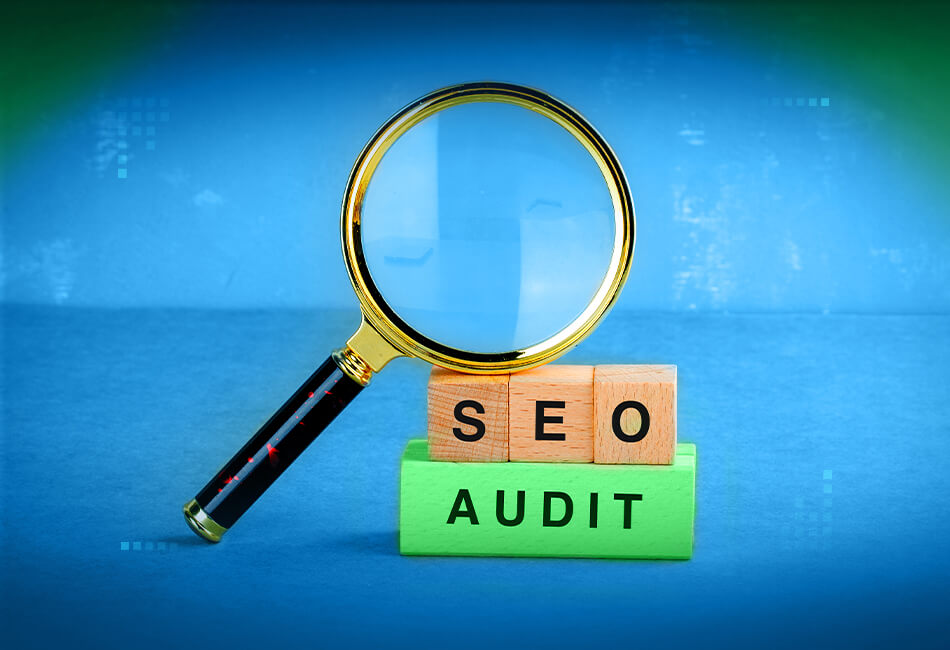
In the world of online business, visibility is everything. And when it comes to attracting customers and driving conversions, organic search reigns supreme. But with millions of websites vying for attention, how do you ensure yours stands out from the crowd?
The answer is in a powerful tool called a technical SEO audit. This comprehensive assessment dives into the hidden workings of your website, identifying and addressing any technical issues that may be hindering your search engine ranking and organic traffic.
What is a technical SEO audit?
A technical SEO audit is an analysis of your website’s underlying infrastructure and code, specifically focusing on aspects that impact search engine crawling, indexing, and ranking, identifying any issues that may be hindering its visibility in search results.
Similarly, a website with a clean and optimized technical foundation is more accessible to search engines, leading to better visibility and organic traffic.
Technical SEO checklist
1. Crawlability & Indexability: This involves ensuring search engines can easily access and understand your website’s content. It includes checking the robots.txt file, sitemap, and for any broken links.
2. Mobile-friendliness: With mobile-first indexing now the norm, having a mobile-friendly website is no longer optional. The audit will assess your website’s responsiveness and mobile usability.
3. Internal and External Links: The structure of your website’s internal linking system plays an important role in search engine understanding. The audit will analyze your internal linking structure and identify any external links that might be harming your website’s ranking.
4. Page Speed: Page speed is a major ranking factor. The audit will assess your website’s loading times and provide recommendations for improvement.
5. On-page Optimization: This includes optimizing your title tags, meta descriptions, header tags, and content for relevant keywords.
6. Technical SEO Best Practices: The audit will also look for technical best practices such as canonical tags, schema markup, and XML sitemaps.
7. Site Architecture: The overall structure of your website can significantly impact its search engine ranking. The audit will analyze your website’s architecture and recommend improvements if necessary.
Why perform a technical SEO audit?
A technical SEO audit is more than just an option; it’s a necessity. It’s the cornerstone for building a website that thrives online. Let’s face it, the competition for online attention is fierce. Users are bombarded with countless websites vying for their clicks. To stand out in this crowded space, you need a website that’s not just visually appealing but also technically sound.
Investing in a technical SEO audit is an investment in your website’s future. It’s a valuable tool for identifying and addressing underlying issues that can significantly impact your online presence. By taking this vital step, you unlock your website’s hidden potential, pave the way for greater visibility, and ultimately, drive success for your business. schedule a technical SEO audit today and unlock its true potential.
Further Resources:
- 93% of online experiences begin with a search engine.
- 53% of mobile users will abandon a site that takes more than 3 seconds to load.
- Businesses with a well-optimized website generate 53% more leads than those with a poorly optimized site.
Addressing the technical issues
By addressing these technical issues, you can:
- Increase organic traffic: A well-optimized website will be more visible in search results, leading to more organic visitors.
- Improve user engagement: Faster loading times and mobile-friendliness provide a better user experience, keeping visitors engaged with your website.
- Boost conversions: A well-structured and optimized website attracts qualified leads, leading to increased conversions and sales.
- Enhance brand reputation: A polished and professional website builds trust with potential customers, strengthening your brand image.
When you perform a technical SEO audit?
When is the right time to perform a technical SEO audit? Here are some key situations that call for this crucial analysis:
1. Website Launch: Before launching a new website, conducting a technical SEO audit is crucial. It helps identify any initial technical issues that could prevent search engines from crawling and indexing your website properly, ensuring a smooth and successful launch.
2. Website Redesign: Any significant changes to your website’s structure or design warrant a technical SEO audit. Redirects, broken links, and compatibility issues can arise during redesigns, and a timely audit helps prevent these issues from impacting your website’s performance.
3. Stagnant or Declining Traffic: If you notice a decrease in organic traffic or a plateau in your website’s ranking, a technical SEO audit can help uncover the reasons behind this stagnation. By identifying hidden technical issues, you can take targeted action to improve your website’s visibility and attract more visitors.
4. Competitor Analysis: Regularly monitoring your competitors’ websites and their SEO strategies is essential for staying ahead of the curve. A technical SEO audit can help you identify their strengths and weaknesses in terms of technical SEO, allowing you to develop strategies to outperform them in search results.
5. Algorithm Updates: Search engine algorithms are constantly evolving, and these updates can sometimes have unintended consequences on your website’s ranking. Performing a technical SEO audit after major algorithm updates helps you adapt your website to the new requirements and maintain your visibility.
6. Website Security Concerns: If you suspect your website has been hacked or compromised, a technical SEO audit can help identify any security vulnerabilities that might be exploited. Addressing these vulnerabilities promptly is crucial for protecting your website and its data.
7. Frequent User Complaints: If you receive consistent complaints from users about slow loading times, broken links, or other technical issues, a technical SEO audit is essential to identify the root cause of these problems and implement solutions to improve user experience.
Steps of technical SEO audit
A technical SEO audit dives deep into your website’s foundation to uncover any hidden obstacles hindering its online success. This comprehensive analysis involves several key steps, each playing an important role in optimizing your website for visibility and performance.
Crawling Your Website:
This initial step involves mimicking search engine bots and crawling your website, identifying all pages and resources linked within. Tools like Screaming Frog and DeepCrawl are valuable allies in this process, providing detailed reports on your website’s architecture and exposing any crawl errors that may prevent search engines from accessing important content.
Spotting Crawlability and Indexation Issues:
Once the crawl is complete, the next step is to identify any issues that could hinder search engine crawlers and indexers. This includes:
- Robots.txt: Ensure your robots.txt file is configured correctly to allow search engines to crawl and index desired pages, while blocking access to those you want to remain hidden.
- Sitemap: Verify that an accurate and updated XML sitemap is submitted to search engines, providing a clear roadmap of your website’s content.
- Broken Links: Broken links can confuse search engines and frustrate users. Identify and fix any broken links on your website to ensure a smooth user experience.
- URL Structure: Review your URL structure for clarity and consistency, incorporating relevant keywords and avoiding excessive parameters.
Checking Technical On-page Optimization:
Even the most captivating content can be lost in the digital world if it’s not optimized for search engines. This step involves analyzing:
- Title Tags & Meta Descriptions: Ensure your title tags and meta descriptions are unique, relevant, and include targeted keywords, accurately reflecting your page’s content and enticing users to click.
- Header Tags: Use header tags (H1, H2, etc.) correctly to structure your content, highlight key information, and improve readability for both users and search engines.
- Image Optimization: Optimize your website’s images by using descriptive filenames, alt text, and proper compression techniques to improve accessibility and search engine understanding.
Identifying Image Issues:
Images are a vital part of any website, but poorly optimized images can negatively impact your website’s performance. This step involves:
- Large Image Sizes: Large image files contribute to slow loading times, a major ranking factor. Use image compression tools to reduce file size without compromising quality.
- Missing Alt Text: Alt text provides context for images, improving accessibility for visually impaired users and helping search engines understand the content of your images.
- Broken Image Links: Broken image links not only lead to a poor user experience but also can confuse search engine crawlers. Fix or remove broken image links to keep your website running smoothly.
Analyzing Internal and External Links:
Your website’s internal and external linking structure plays a crucial role in SEO. This step involves:
- Internal Linking: Review your internal linking structure to ensure it’s logical and helps users navigate your website easily. Link relevant pages to each other to spread link juice and improve website hierarchy.
- External Links: Analyze the quality and relevance of your external links. Ensure they point to reputable websites with high domain authority to enhance your website’s trust and authority.
- Anchor Text: Use descriptive and relevant anchor text for your internal and external links to improve both user experience and search engine understanding.
Measuring Site Speed and Performance:
A website that takes forever to load; customers get impatient and leave. This step involves:
- Page Speed Testing: Utilize tools like Google PageSpeed Insights to measure your website’s loading speed and identify areas for improvement.
- Performance Optimization: Implement various optimizations, such as caching, minification, and image optimization, to ensure your website loads quickly and delivers a smooth user experience.
Checking for Mobile-friendliness:
With the majority of web searches happening on mobile devices, ensuring your website is mobile-friendly is no longer optional. This step involves:
- Mobile-First Indexing: Google now prioritizes mobile-friendly websites in its search results. Ensure your website is responsive and optimized for various mobile devices.
- Mobile Usability Test: Use tools like Google’s Mobile-Friendly Test to assess your website’s mobile-friendliness and identify any areas for improvement.
- Mobile Page Speed: Mobile users are even less tolerant of slow loading times. Optimize your website for mobile page speed to ensure it delivers a fast and seamless experience.
Tips for Successful Implementation of a Technical SEO Audit
Performing a technical SEO audit is just the first step in optimizing your website for search engine visibility. The real magic happens in the implementation phase, where you take action to address identified issues and unlock the hidden potential of your website.
Here are some valuable tips to ensure your technical SEO audit implementation is a resounding success:
- Prioritize: Tackle critical issues first, focusing on those with the biggest impact on performance and user experience.
- Set Realistic Goals: Don’t try to fix everything at once. Set achievable goals and break down tasks into manageable steps.
- Communicate and Collaborate: Keep stakeholders informed and involve relevant teams (developers, content creators) to ensure everyone is aligned.
- Document and Track: Record all changes made and use tools like Google Search Console to track progress and measure impact.
- Test and Monitor: Continuously test and monitor your website’s performance after implementing changes to assess their effectiveness.
- Continuous Improvement: Technical SEO is a journey, not a destination. Regularly schedule follow-up audits and adapt your strategies based on new trends and technologies.
- Seek Professional Help: If you lack the resources or expertise, consider partnering with an SEO specialist or agency.





